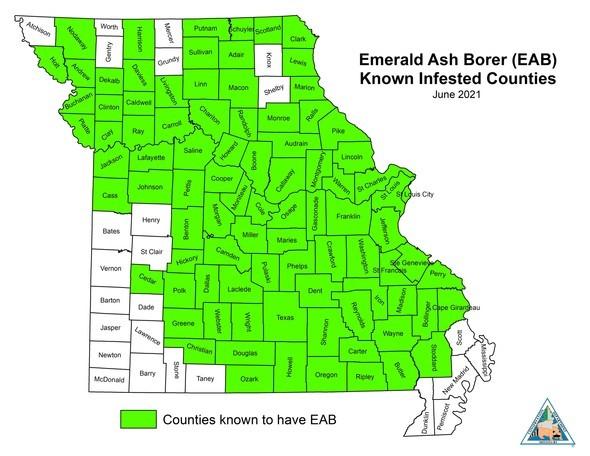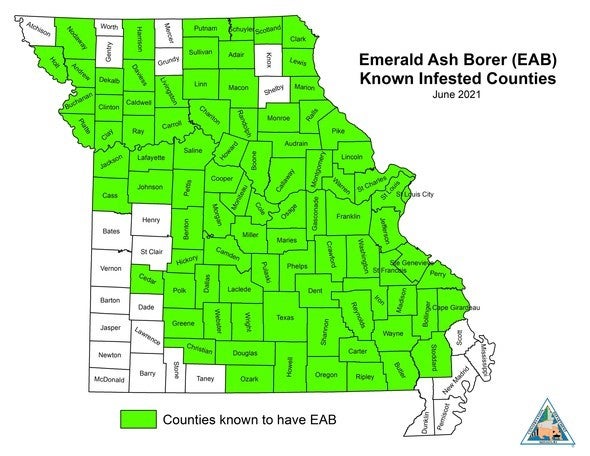
Xplor reconnects kids to nature and helps them find adventure in their own backyard. Free to residents of Missouri.


































Stay in Touch with MDC news, newsletters, events, and manage your subscription

Xplor reconnects kids to nature and helps them find adventure in their own backyard. Free to residents of Missouri.

A monthly publication about conservation in Missouri. Started in 1938, the printed magazine is free to residents of Missouri.


COLUMBIA, Mo. — The Missouri Department of Conservation (MDC) reports the presence of emerald ash borer (EAB) in 89 Missouri counties and the City of St. Louis. Unfortunately, ash trees in forests across Missouri will soon be dead, as EAB continues its march across the state.
EAB is a small, metallic green beetle native to Asia that attacks all species of ash trees, killing more than 99 percent of the trees it attacks. Ash trees typically show a pattern of declining health for 2–4 years before being killed by EAB.
Woodpecker damage, sprouts growing from the main trunk, and major branch loss can all indicate the presence of EAB in ash trees.
“Landowners often notice woodpecker damage on their ash during the winter months — typically the first sign of EAB in an area,” says MDC Forest Entomologist Robbie Doerhoff. “By the time you notice this type of damage, it is generally too late to save your tree with insecticides.”
Protecting ash trees on your property with insecticides prior to attack by EAB is the best way to keep the trees alive.
“If you have a live ash tree in your yard and you’d like to see it stay that way, now is the time to treat it with an insecticide,” says Doerhoff. “Not all products will protect your tree from EAB, so it’s important to understand your options when it comes to this pest.”
See MDC’s EAB Management Guide for Missouri Homeowners for a list of insecticides recommended by EAB experts, and follow these steps when considering ash treatments:
Doerhoff says that once EAB becomes established in a new area and wintertime woodpecker damage becomes evident, most local ash trees will be dead within a few short years.
“Dying or dead ash become very brittle and should be removed promptly if they pose a threat to people or property,” says Doerhoff.
MDC encourages Missourians to consider replacing EAB-affected ash trees with other Missouri-native tree species. For information about suitable replacement tree species and to place seasonal orders with MDC’s State Forest Nursery, visit mdc.mo.gov/trees-plants/tree-seedlings/about-missouris-state-forest-nursery.
Don’t move firewood
Felled ash trees should be disposed of locally to prevent the accidental spread of EAB to new locations. EAB can emerge from ash firewood and logs for up to two years after harvest, so don’t give EAB a free ride to your favorite camping locations. Buy firewood near where you plan to burn it!
MDC encourages Missourians to report possible EAB infestations in counties where the pest has not yet been confirmed. Reports can be made by emailing Forest.Health@mdc.mo.gov.